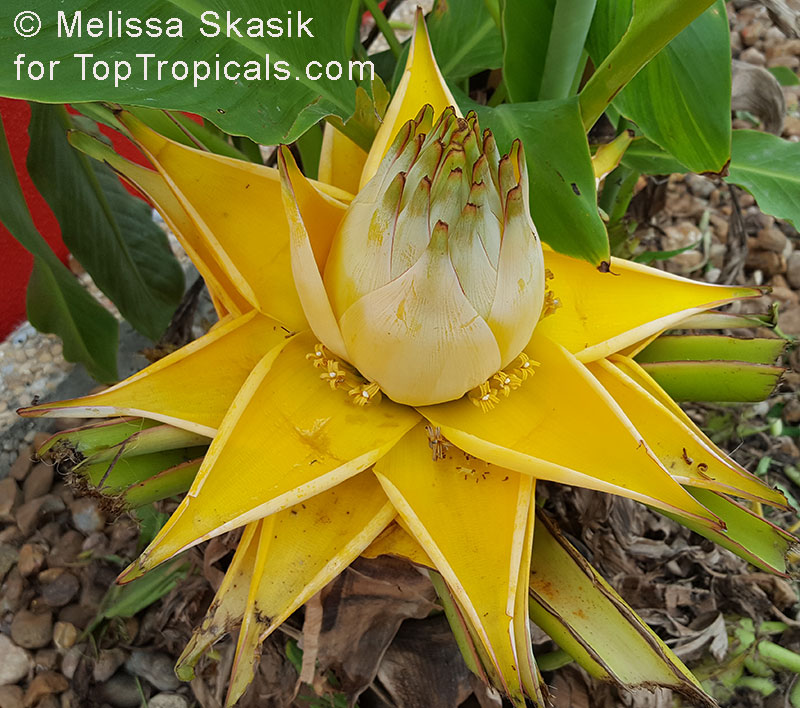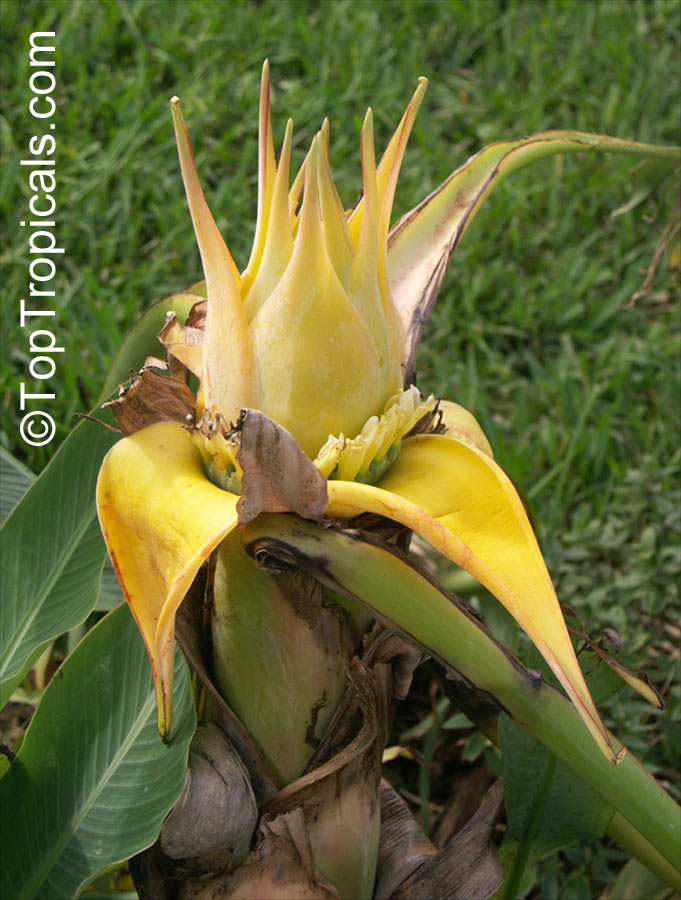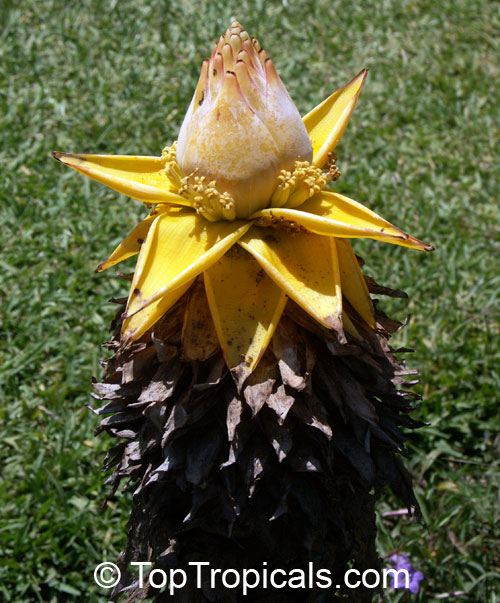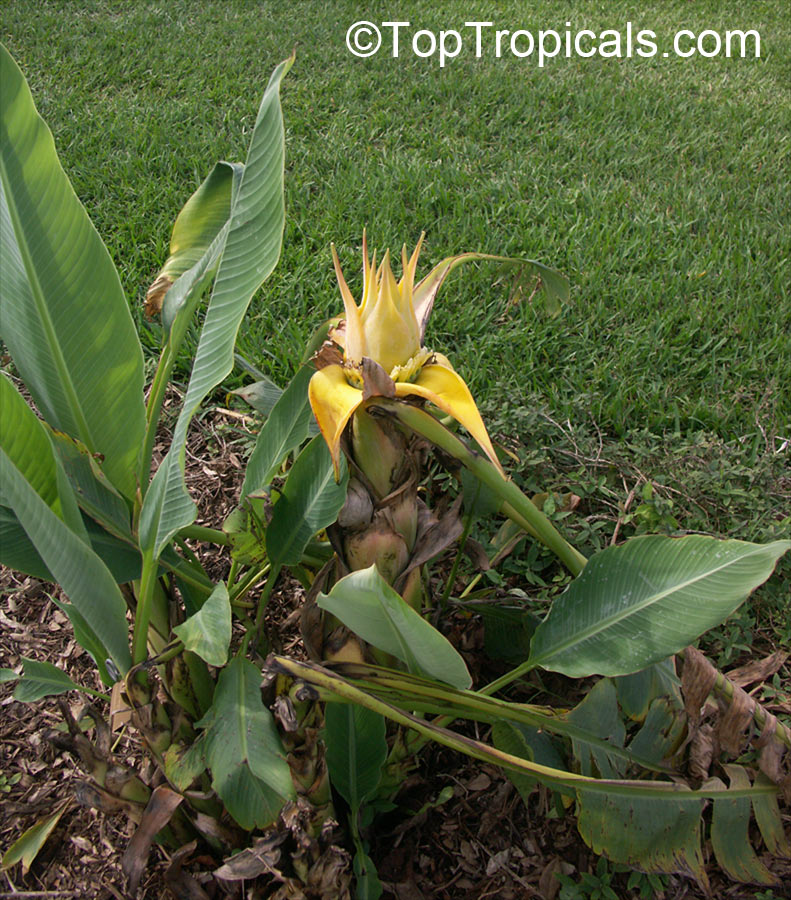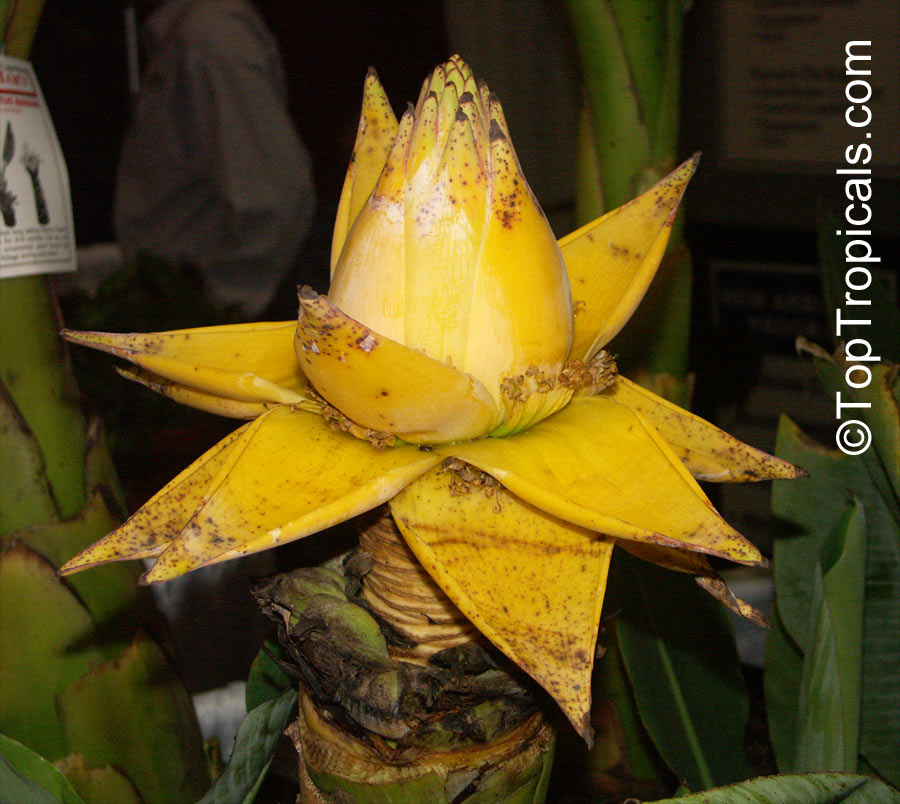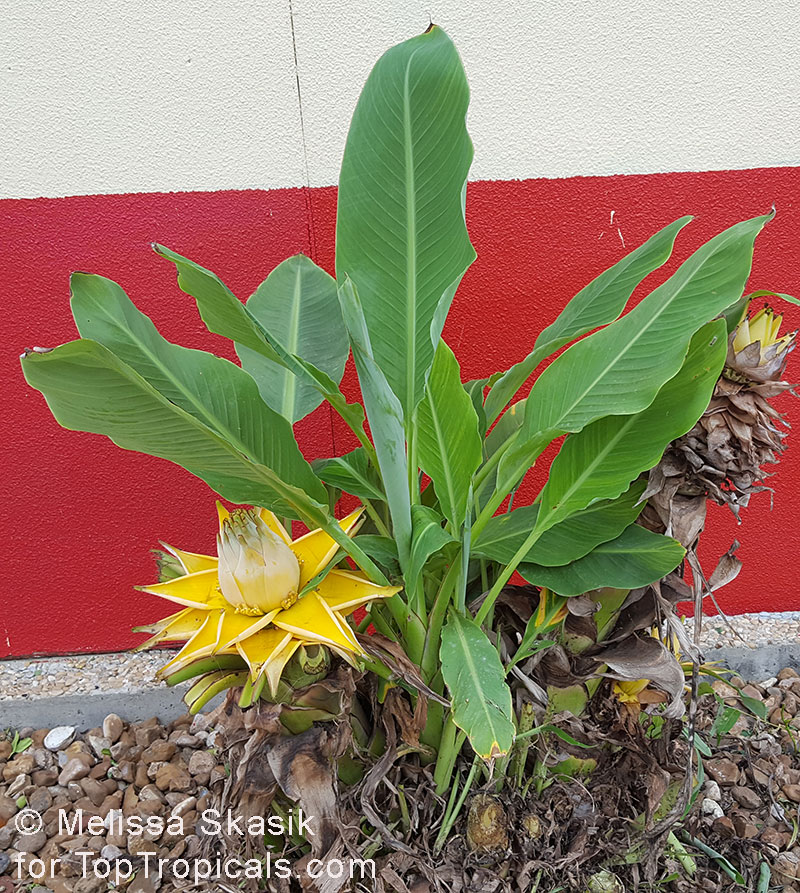Pictogram Guide · Mouse over pictogram for definition
Ensete lasiocarpum, Musella lasiocarpa, Musa lasiocarpa
Chinese Yellow Banana, Golden Lotus BananaFamily: Musaceae
Origin: China








Because of its suckering habit, it is important to give plants plenty of spacing.
Ensete lasiocarpum is a unique and attractive addition to the home garden. It is a large, evergreen shrub that can grow up to 5 - 10 feet tall and 2-5 feet wide. Native to mountainous areas in the Yunnan Province of China, its paddle-like gray-green leaves and yellow, orange flowers make it a stunning ornament in any garden. It typically blooms throughout the summer, producing an upright inflorescence of yellow tubular flowers subtended by broad, stiff, waxy, yellow bracts. Flowering usually begins in the second year and continues annually thereafter.
Ensete lasiocarpum can be grown in full sun or semi-shade, in well-drained soil, and with regular watering. It is generally winter-hardy in USDA Zone 7-10, but may survive cold winters in Zone 6 if well-protected with a thick winter mulch over the root area. For areas outside of the recommended zones 7-10, it is best to grow this plant in containers, using a well-drained potting soil mix. In order to prevent freezing in winter, containers with Ensete lasiocarpum should be brought indoors before the first frost and placed in a warm, sunny area, with reduced soil moisture. Alternatively, they can be brought into a cool, frost-free basement corner and given occasional touches of moisture in winter to prevent the soils from totally drying out. Plants should also be given ample spacing, as they have a tendency to sucker.
In terms of care, Ensete lasiocarpum should be fertilized regularly during the growing season. Mulching the soil is a recommended practice, as this helps retain moisture and minimizes weeds. In cold regions, growth in a pot is best recommended, as this will provide a much better protection from frost, and ensure the plant survival. Pots should be placed in a sheltered area, such as a patio or porch, and mulching with straw or evergreen boughs is an effective way to insulate the soil. In addition, a covering of burlap or old blankets can be used to protect the leaves from cold winds.
Similar plants:
- Ensete ventricosum, Musa arnoldiana, Musa ensete Maurelii (Red banana, Abyssinian banana, Ethiopian banana)
- Calathea musaica (Network Calathea)
- Musa hybrid ( ABB group ) (Cooking banana, Rulo)
- Musa sp. (Banana, Bananier Nain, Canbur, Curro, Plantain)
- Musa sumatrana, Musa acuminata ssp. zebrina (Blood Leaf Banana)
- Musa velutina (Hairy Banana, Pink Banana)
- Musa x paradisiaca Ae Ae (Royal Variegated Banana, Variegated Hawaiian Banana, Sacred Banana, Ae Ae Hybrid Plantain Banana)
